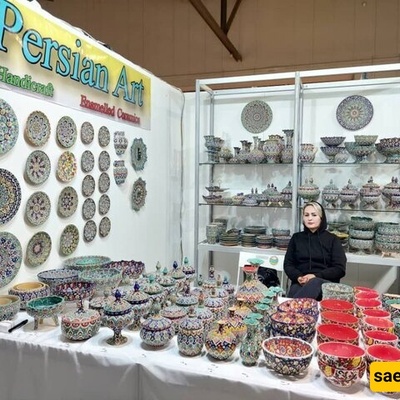SAEDNEWS: In days when the sky of Iran is clouded with the dust of aggression and sorrow, the sound of music has risen like a mirror of collective emotions; voices that were created not for entertainment, but for comfort, empathy, and inspiration.

Saesnews, Music Group: In these days when Iran’s sky is clouded with the dust of aggression and sorrow, the sound of music has risen like a mirror reflecting collective emotions. These voices were created not for entertainment, but for comfort, empathy, and motivation. Music, utilizing its two main elements—melody and rhythm—has always played a central role in stirring collective feelings and, in critical historical moments such as war, has been a powerful voice for the nation. Iranian musicians have also responded to the recent attacks by the Zionist regime, expressing their sympathy with the people and the innocent martyrs of the country through releasing new pieces.
Mohammad Motamedi and the Banner of “Del Mibari” (You Steal the Heart)
Among fusion and classical singers, Mohammad Motamedi appeared with a piece titled “Iran Ali.” This music video, warmly received on social media, used a combination of image and sound to evoke empathy and passion. Motamedi, who has always been a socially and nationally conscious artist, sought in this work to deliver a clear message in defense of Iran’s land and people through the language of art.
Mohsen Chavoshi and the Protest Uprising with “Elaj” (Cure)
One of the most striking reactions in this regard came from Mohsen Chavoshi. Continuing his clear and anti-oppression stance, he released a meaningful piece titled “Elaj,” with lyrics by Kazem Bahmani and arranged and performed by himself. In this song, Chavoshi focuses on themes of national resistance, condemnation of child killing, and praise for the perseverance of the people. Lines such as “We live like hope” and “This war is hand-to-hand combat” clearly reflect a combative and dignity-seeking spirit.
The dramatic atmosphere of the piece, along with heavy instrumentation and a straightforward tone, made “Elaj” not just a musical track but an artistic statement defending the homeland and its people—a clear message to the enemy that we are still standing.
Salar Aghili; From the Heart of Tradition to the Hearts of the People
Salar Aghili, a well-known traditional Iranian singer, also released a piece titled “Baraye To Bimiram Ey Iran” (To Die for You, Oh Iran) on his personal page during these sorrowful days. According to him, this work is dedicated to the innocent people of our country. It is a melody born from tradition and feeling, reflecting sorrow and love for a land drenched in pure blood.
Aghili’s tender and passionate voice once again proved that traditional music can also be a language of protest, empathy, and resistance.
Talischi; The Voice of Pop for the New Generation
On the other hand, Alireza Talischi, a popular singer among the youth, joined the wave of artistic reactions by releasing a new piece online. Although the content of his work was mostly emotional and empathetic, his presence as a pop figure alongside the veterans of traditional and fusion music shows the solidarity of different musical generations with the people of the country during these times.
Music; A Gentle Yet Effective Combat
Reza Mahdavi, a music researcher, says about music’s role in times of crisis: “Throughout history, from the drums of the battlefield to the hopeful tunes of return, music has always had a deep impact on human feelings and motivation. During the Sacred Defense (Iran-Iraq War), from classical rhythms to the 6/8 beat, each played a role in arousing and soothing the fighters.”
He believes that contrary to common perception, epic music is not limited to rigid military marches. Sometimes, even gentle and hopeful melodies can keep the spirit of resilience alive better than heavy marches.
Returning to the Epic-Making Memories
Meanwhile, recalling the enduring voices of the 1980s — from Mohammad Golriz with anthems like “Blessed Be This Victory” to Sadegh Ahangaran’s elegies such as “Karbala Awaits Us” — shows that the tradition of resistance music in Iran is deeply rooted and can be revived. Today, this tradition continues with the language of the new generation and modern tools.
In these turbulent days, music artists have once again remembered their historic role: narrating collective emotions, strengthening national spirit, and expressing empathy with people who face fire and sorrow. From the most traditional voices to the pop melodies, music stands alongside the people—fearless, humble, and with a clear voice saying that Iran is not alone.

